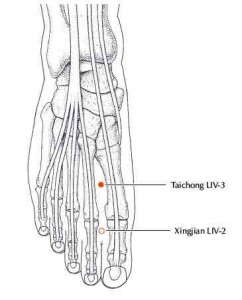|
Traditional Chinese medicine treatments for chronic headaches focus on both symptom relief as well as finding and treating the underlying cause. The following article will provide you with some self care suggestions as well as a brief understanding of some of the most common headache patterns seen. Acupuncture is great at treating both chronic and acute headaches! It's safe, natural, and effective for most types of headache, but there's also some self-help remedies you can try at home until you can get in for an appointment:
Common Headache Patterns For those interested in more specific TCM (Traditional Chinese Medicine) patterns of headache, I have outlined the 3 most common types below: LIVER If the cause of your headaches are due to an imbalance in the Liver system, trigger points are usually found in the trapezius & muscles on the sides of the neck. The headache will generally be located either at the temples (sometimes on one side of the head only), behind the eyes, or on the top of the head. These headaches tend to be more splitting or throbbing and a sensation of heat in the upper body is also indicative of this pattern. Anger or high blood pressure can sometimes trigger a Liver headache. DIGESTIVE Patterns associated with the SPLEEN/PANCREAS system can be triggered by food allergies or intolerances, dampness, and sinus congestion (as phlegm can form from poor digestion). Trigger points are typically located in the face & neck muscles and the pain is generally felt on the forehead or sinuses. These types of headaches can be triggered after overeating or after eating a rich meal. KIDNEY/ADRENAL/BLADDER This pattern includes headaches from external conditions such as exposure to prolonged cold or wind. In addition, headaches affecting these channels (pathways of energy) can occur when the body is run down, such as after a long illness or stress. Usually located on the back of the head in the occipital region/base of the skull, these headaches typically cause a dull pain. Trigger points are found in the trapezius or occipital muscles. These headaches can come on after working a long day or when fatigued. In addition, it's possible to have a combination of these patterns happening simultaneously. How Chinese medicine can help Your observations along with an assessment of your health history and tongue and pulse diagnosis will help determine your particular pattern of headache. Then specific acupuncture points will be selected to balance the body and shift the underlying mechanism. Herbal formulas will help facilitate the process by moving blood, anchoring ascending heat, tonifying any underlying weakness, and balancing hormones as needed. Trigger point therapy can also be helpful to release knots in the muscles of the back, neck & head which may be referring pain to other areas. A technique called gua sha may also be used to move fresh blood into the muscles and deeper tissues thus clearing any stagnant qi or blood which could be contributing to the pain of headaches. If you are interested in receiving acupuncture for chronic headaches or other health concern, please contact Joy Blais at Blue Buddha Acupuncture Lake Oswego, Oregon. Joy Blais L.Ac. (503) 855-9429 website: www.BlueBuddhaAcupuncture.com email: [email protected]
0 Comments
|


 RSS Feed
RSS Feed
